Briefly: In our opinion no speculative positions in gold, silver and mining stocks are currently justified from the risk/reward point of view.
After several weeks of rallying, the USD Index finally took a dive last week and – naturally – precious metals reacted in a very visible way. Gold and silver are not above their recent highs, but mining stocks seem to be breaking higher. Are PMs on a verge of a major breakout?
In short, its too early to say so – there are a few bullish factors in place, but there are quite a few bearish ones as well, so the overall implications are not strongly bullish or bearish (as far as the short term is concerned). Let’s take a closer look (charts courtesy of http://stockcharts.com).
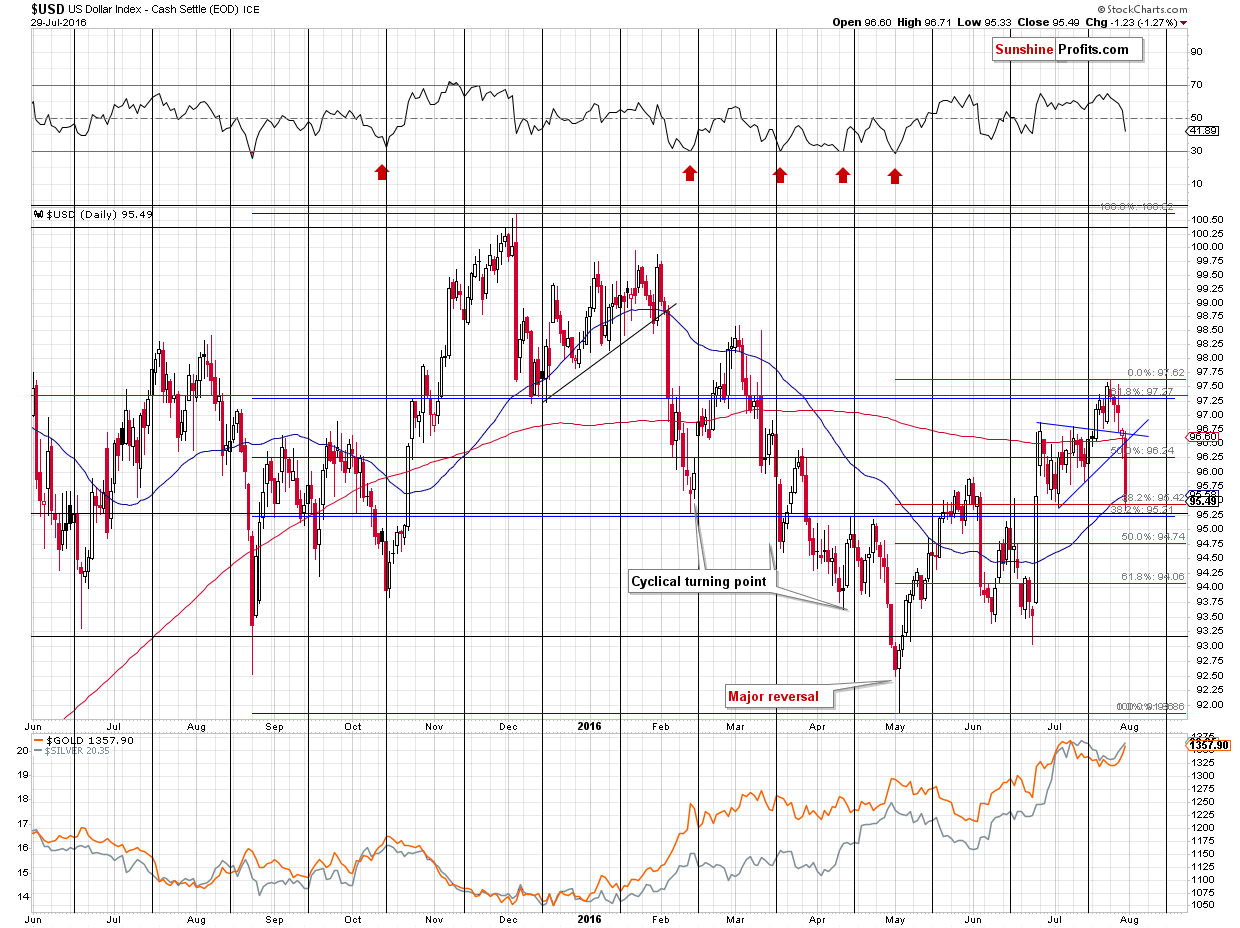
In Friday’s alert we wrote the following:
(…) Besides, the USD is declining today (being at 96.21 at the moment of writing these words) as well, so the breakdown could be invalidated based on today’s closing prices – caution seems warranted.
The USD Index kept declining in the following part of the day and finally ended much lower. Much, but it didn’t break visibly below key support levels (other than the triangle pattern, but the decline that was likely based on the breakdown below it has already materialized). The 38.2% Fibonacci retracement level held, the 50-day moving average and the previous July lows were not visibly broken. Consequently, the decline – even though it was sharp and big – does not make other declines very probable.
Moreover, please note that the USD Index is more or less where it was at the beginning of July and we can say the same about gold and silver – with no clear outperformance or underperformance of metals relative to the USD, the implications are unclear.
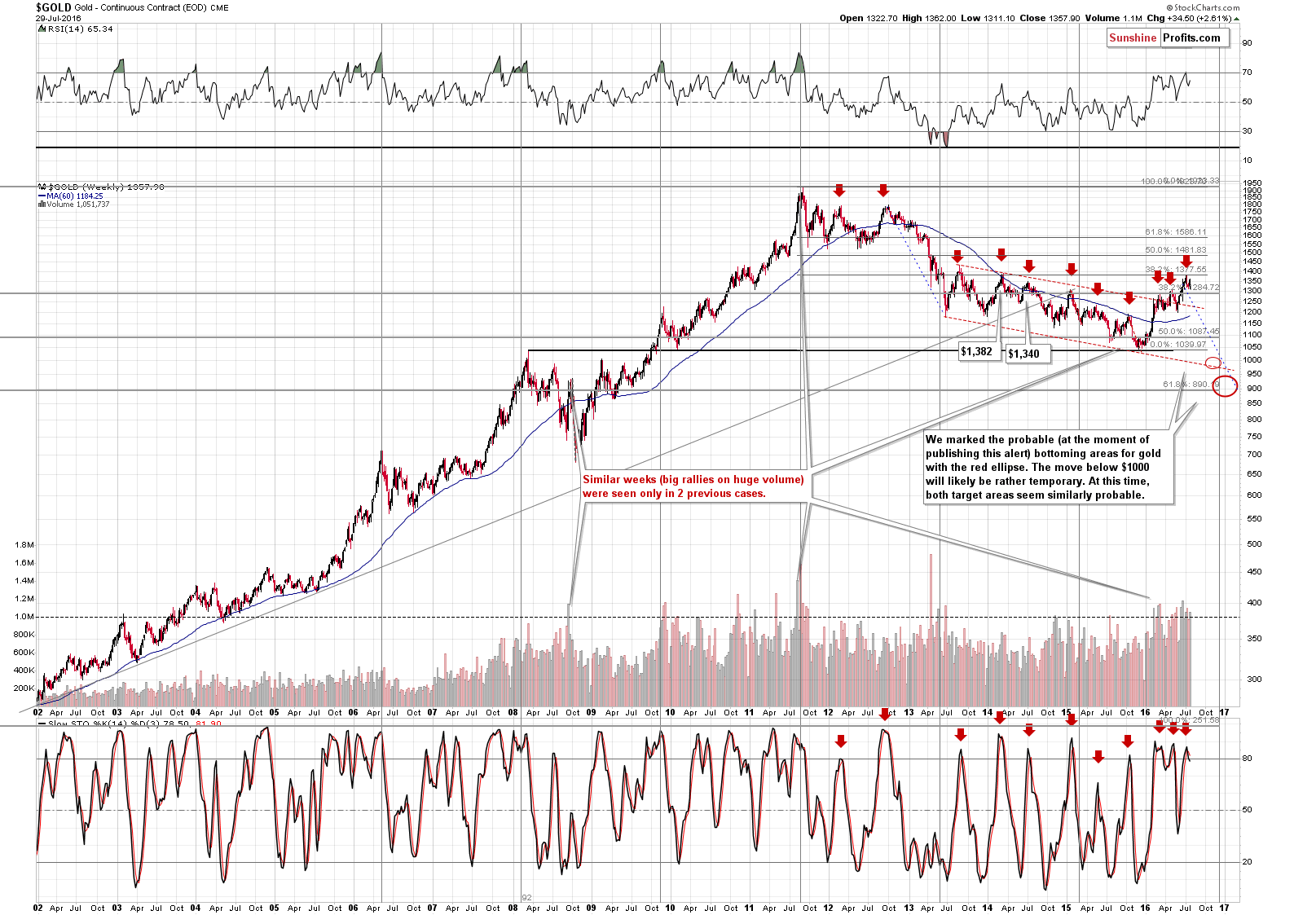
The long-term chart for gold didn’t really change based on last week’s events – gold didn’t move above its 38.2% Fibonacci retracement based on the entire 2011 – 2015 decline and the sell signal based on the weekly Stochastic indicator wasn’t invalidated. The medium-term outlook based on the above chart remains bearish.
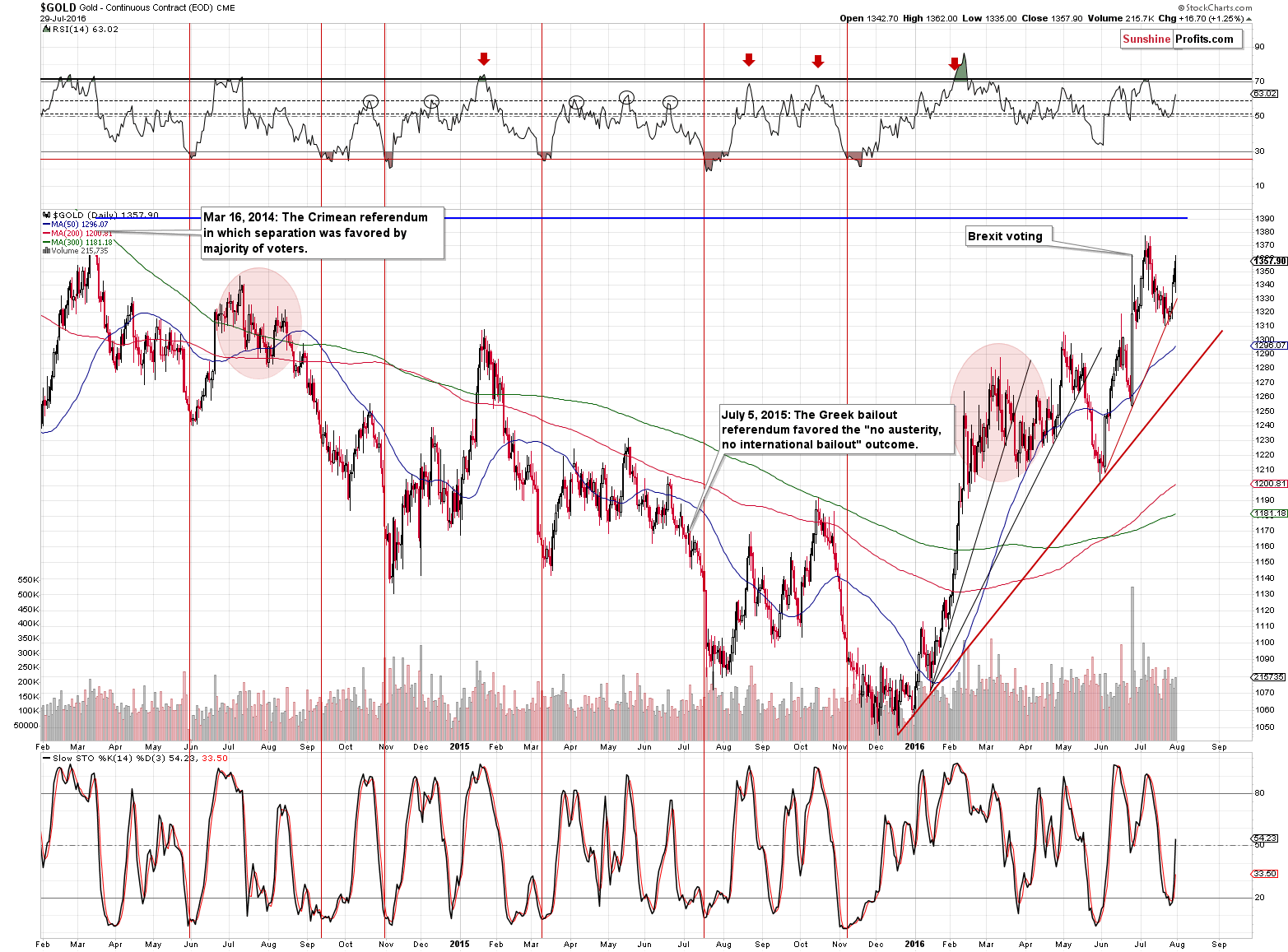
On the short-term chart we see that the daily Stochastic indicator generated a buy signal, but the weekly version of this indicator is much more reliable, so the overall implications still are bearish. Gold moved to the immediate post-Brexit high, which now serves as resistance. Similar price patterns in the past were followed by: a decline (summer of 2015) and a rally (several months ago). Therefore, there are no clear implications of the current situation (especially that the volume was not huge, but not low enough for the move higher to be bearish either).
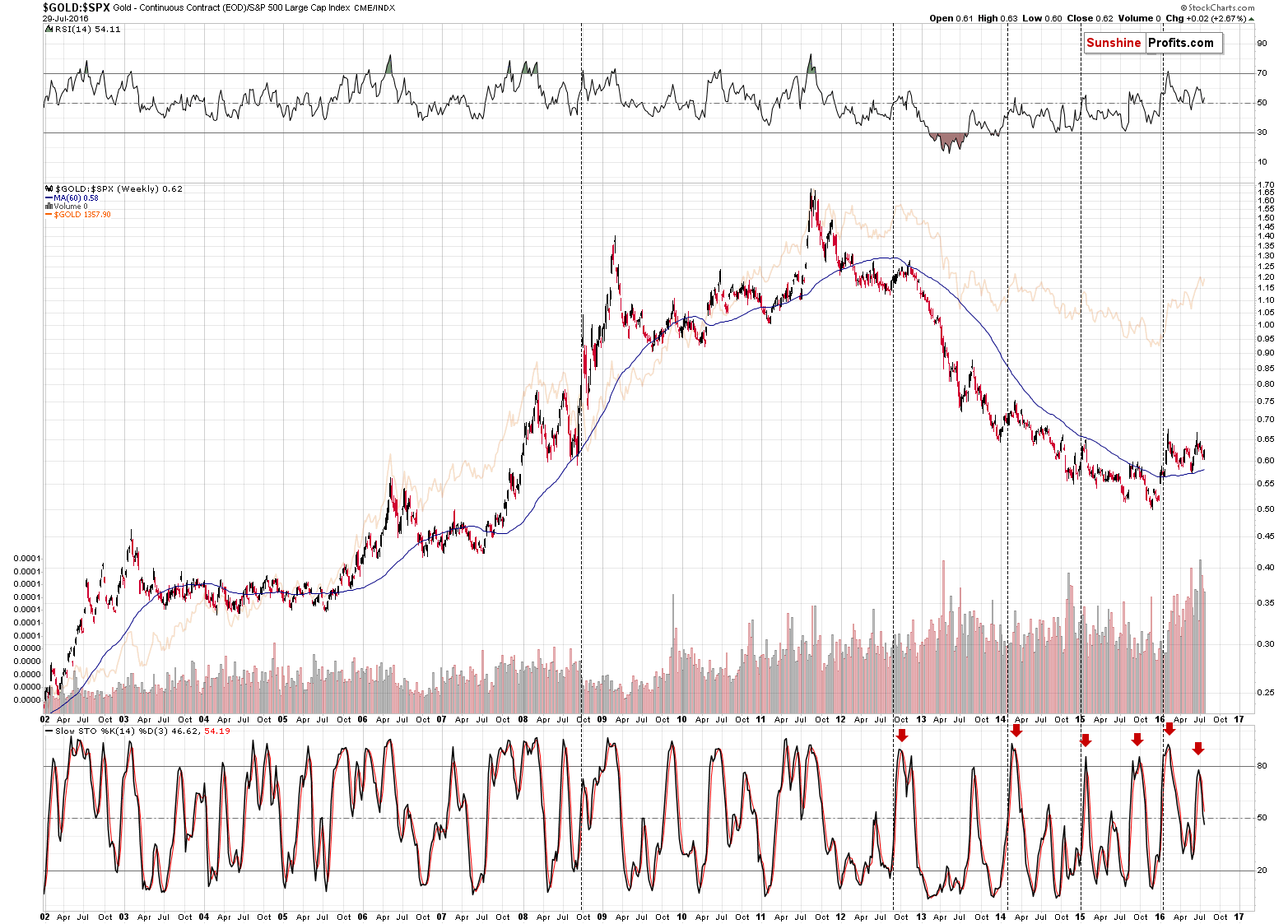
The gold to S&P 500 ratio chart continues to have bearish implications for the medium term as the sell signal from the Stochastic indicator based on the ratio remains in place. These signals quite often confirmed changes in the short-term trends in the precious metals.
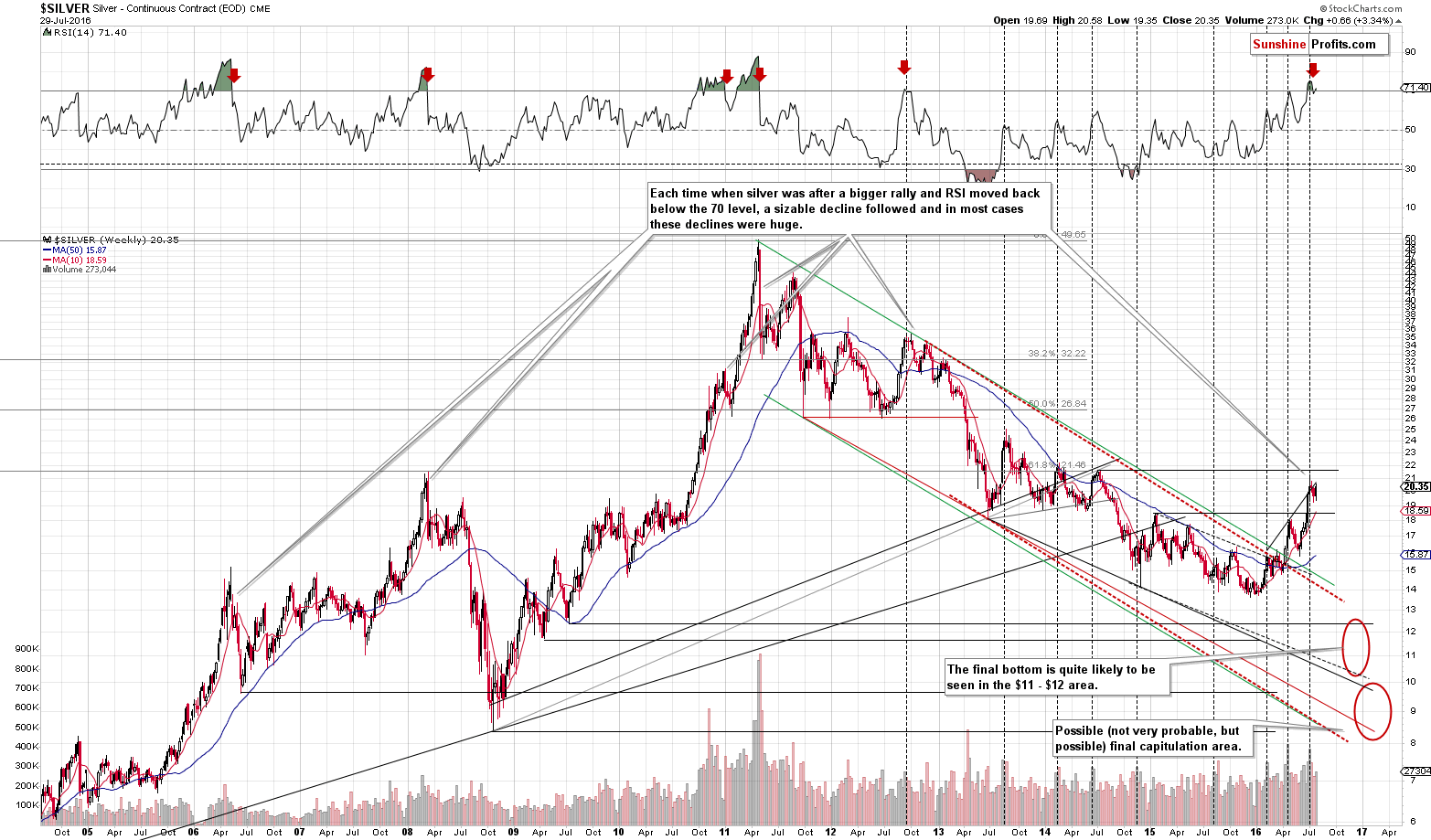
Silver moved once again to the upper border of the rising trend channel without breaking higher. The volume was lower than in the case of the previous weekly rally, so it doesn’t seem that much really changed. As far as the RSI indicator is concerned, it moved once again a bit above the 70 level, which is what happened also in 2012 right before the biggest downswing.
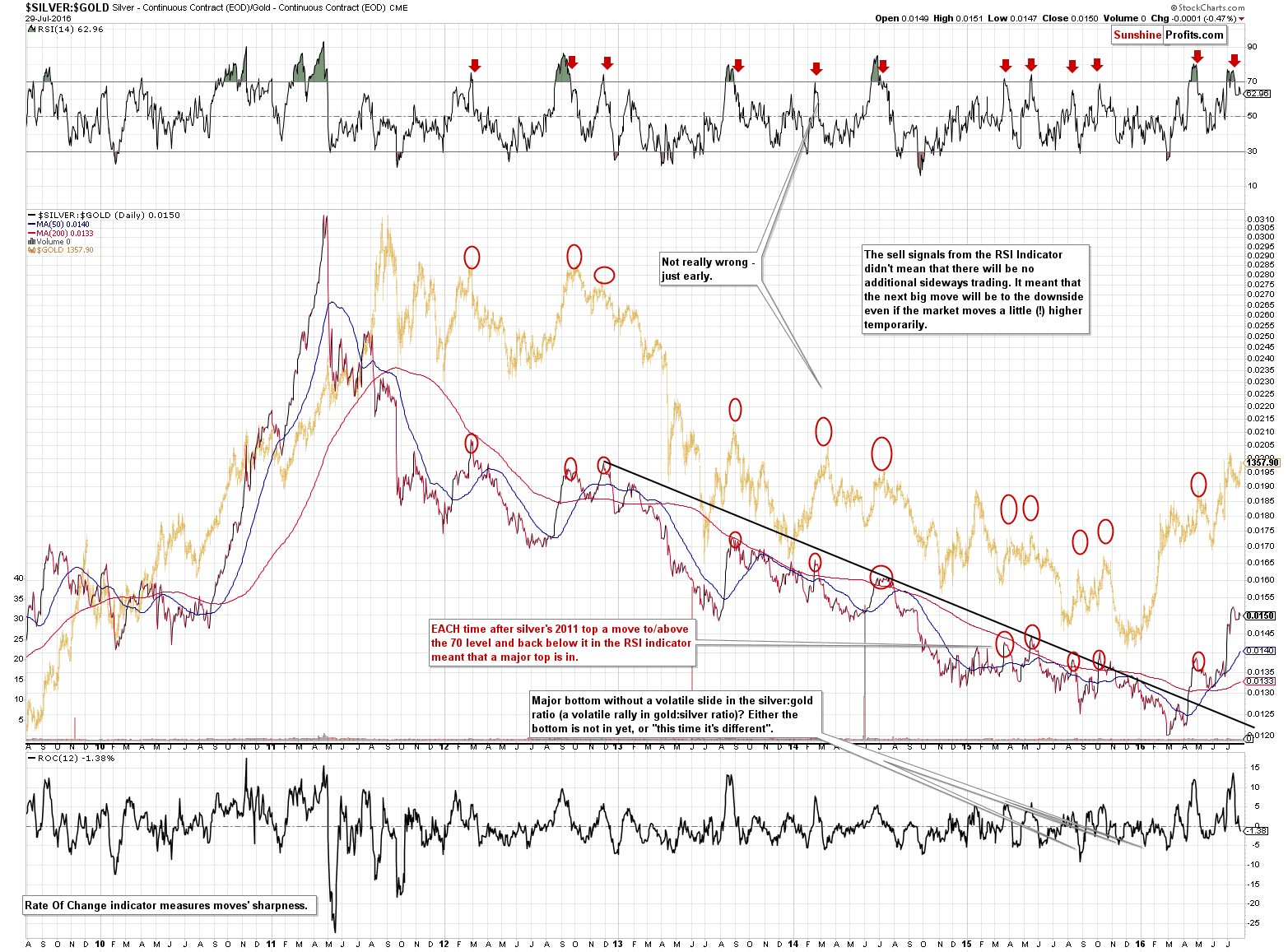
The silver to gold ratio continues to have bearish implications as the RSI indicator moved below the 70 level (which serves as a sell signal), and from the long-term point of view the bearish indications are drawn from the fact that in the past few years silver didn’t underperform gold extremely enough to confirm a final panic mode in the precious metals market – this is what used to happen in the case of other important declines and their final parts.
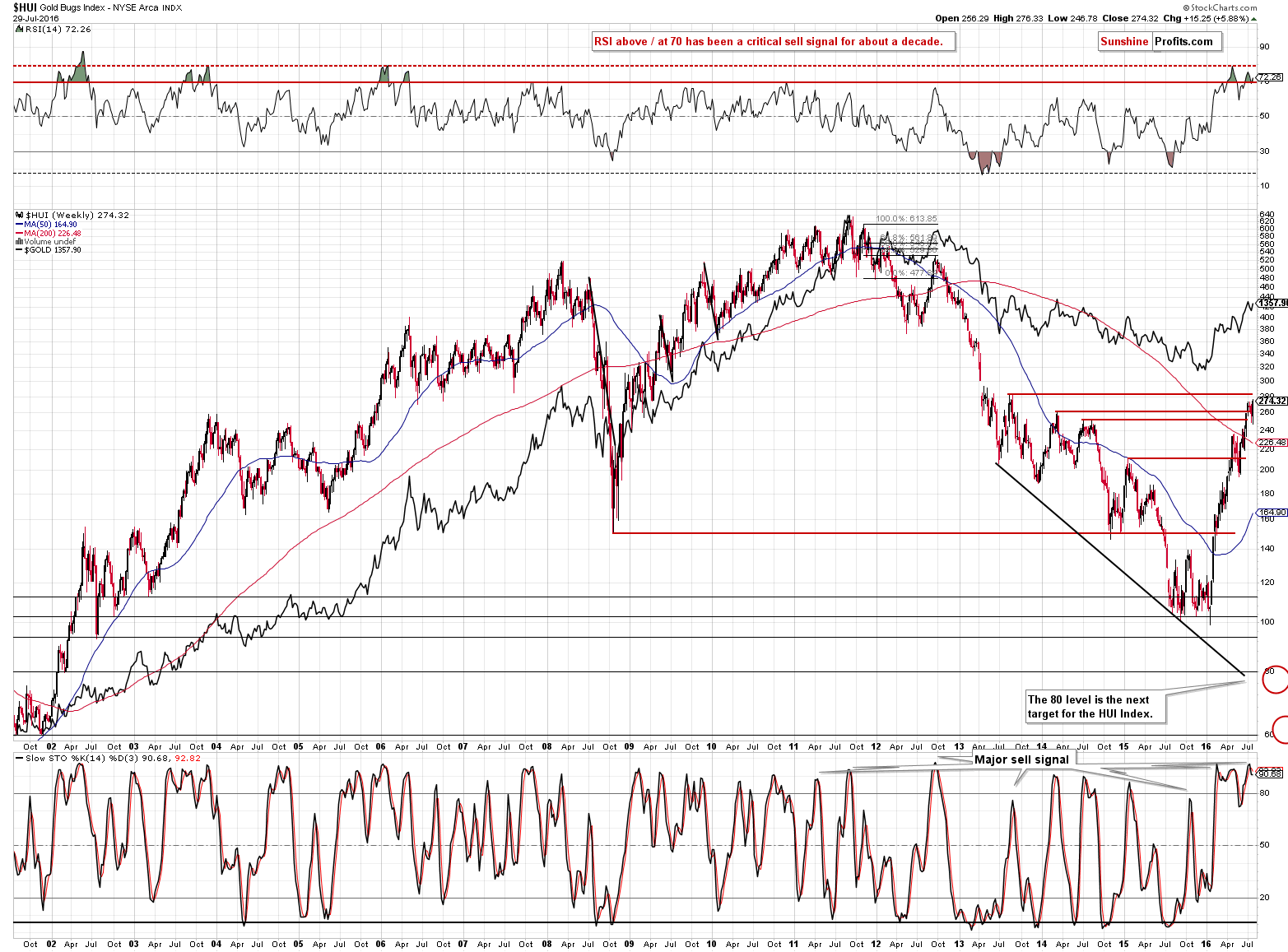
Gold stocks moved higher last week, but not above the mid-2013 high, so as far as the price is concerned, not that much changed from the long-term perspective. On the above chart we can also see that the sell signal from the weekly Stochastic indicator remains in place. Again, not much changed.

On the short-term chart we see that in the case of the GDX ETF there was no breakout even above this year’s highs and the volume that accompanied Friday’s upswing was rather limited. However, the fact that breakdowns below both rising support lines were invalidated is bullish.
Still, mining stocks are extremely oversold as indicated by the Gold Miners Bullish Percent Index and what we wrote about it last week remains up-to-date.
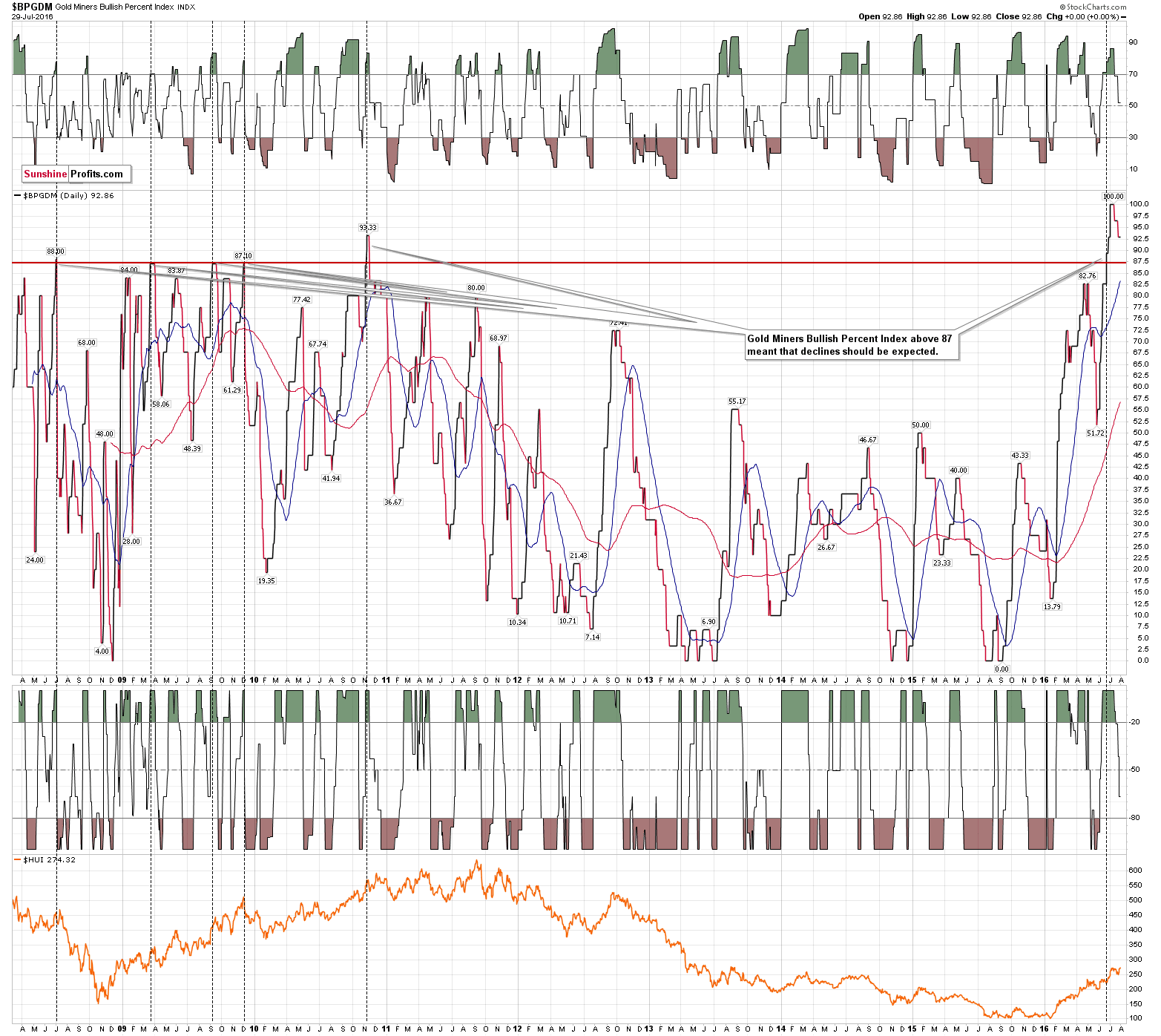
The index finally moved below the extreme 100 reading, but the sell signal that this level indicated by itself (and what the RSI and Williams %R indicators confirmed) remains in place. Similar situations in the past were followed by substantial declines – for instance in 2008 the HUI Index declined by about 300 points in the following months.
Summing up, we currently have a few bullish and several bearish signals in place with the latter being of a more medium-term nature and the former being of a more short-term nature. The implications are that the medium-term outlook remains bearish, but the situation is unclear as far as short term is concerned. We’ll keep monitoring the situation and once we see more bearish (or bullish) confirmations, we’ll let you know. Until that time, it seems that staying on the sidelines with the speculative capital is justified from the risk to reward point of view.
As always, we will keep you – our subscribers – updated.
To summarize:
Trading capital (supplementary part of the portfolio; our opinion): No positions
Long-term capital (core part of the portfolio; our opinion): No positions
Insurance capital (core part of the portfolio; our opinion): Full position
Plus, you might want to read why our stop-loss orders are usually relatively far from the current price.
Please note that a full position doesn’t mean using all of the capital for a given trade. You will find details on our thoughts on gold portfolio structuring in the Key Insights section on our website.
As a reminder – “initial target price” means exactly that – an “initial” one, it’s not a price level at which we suggest closing positions. If this becomes the case (like it did in the previous trade) we will refer to these levels as levels of exit orders (exactly as we’ve done previously). Stop-loss levels, however, are naturally not “initial”, but something that, in our opinion, might be entered as an order.
Since it is impossible to synchronize target prices and stop-loss levels for all the ETFs and ETNs with the main markets that we provide these levels for (gold, silver and mining stocks – the GDX ETF), the stop-loss levels and target prices for other ETNs and ETF (among other: UGLD, DGLD, USLV, DSLV, NUGT, DUST, JNUG, JDST) are provided as supplementary, and not as “final”. This means that if a stop-loss or a target level is reached for any of the “additional instruments” (DGLD for instance), but not for the “main instrument” (gold in this case), we will view positions in both gold and DGLD as still open and the stop-loss for DGLD would have to be moved lower. On the other hand, if gold moves to a stop-loss level but DGLD doesn’t, then we will view both positions (in gold and DGLD) as closed. In other words, since it’s not possible to be 100% certain that each related instrument moves to a given level when the underlying instrument does, we can’t provide levels that would be binding. The levels that we do provide are our best estimate of the levels that will correspond to the levels in the underlying assets, but it will be the underlying assets that one will need to focus on regarding the signs pointing to closing a given position or keeping it open. We might adjust the levels in the “additional instruments” without adjusting the levels in the “main instruments”, which will simply mean that we have improved our estimation of these levels, not that we changed our outlook on the markets. We are already working on a tool that would update these levels on a daily basis for the most popular ETFs, ETNs and individual mining stocks.
Our preferred ways to invest in and to trade gold along with the reasoning can be found in the how to buy gold section. Additionally, our preferred ETFs and ETNs can be found in our Gold & Silver ETF Ranking.
As always, we'll keep you - our subscribers - updated should our views on the market change. We will continue to send out Gold & Silver Trading Alerts on each trading day and we will send additional Alerts whenever appropriate.
The trading position presented above is the netted version of positions based on subjective signals (opinion) from your Editor, and the Tools and Indicators.
As a reminder, Gold & Silver Trading Alerts are posted before or on each trading day (we usually post them before the opening bell, but we don't promise doing that each day). If there's anything urgent, we will send you an additional small alert before posting the main one.
=====
Latest Free Trading Alerts:
On Friday, the preliminary GDP report for the second quarter of 2016 was released. What does it mean for the gold market?
S&P 500 index continues to trade within a short-term consolidation following recent rally. Will it continue towards 2,200 mark? Or is this some topping pattern before downward reversal? Is holding short position justified?
Stock Trading Alert: More Short-Term Uncertainty As Stocks Hover Along Record Highs
=====
Hand-picked precious-metals-related links:
Gold eases as dollar recovers, equities rise
Gold’s $50 Billion M&A Spree Builds as Rally Boosts Values
Indians plow 2.95 tonnes of gold into banks
Rising gold price not lifting all boats
=====
In other news:
Fed's Dudley urges caution on rate hikes, cites risks to U.S.
Fed’s Kaplan Says September ‘On the Table’ If Data Support
Goldman Sachs downgrades equities to 'underweight' over three months
Italy's oldest bank gets 5 billion euro rescue
=====
Thank you.
Sincerely,
Przemyslaw Radomski, CFA
Founder, Editor-in-chief, Gold & Silver Fund Manager
Gold & Silver Trading Alerts
Forex Trading Alerts
Oil Investment Updates
Oil Trading Alerts



